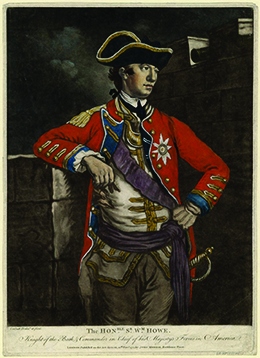| << Chapter < Page | Chapter >> Page > |
After the British quit Boston, they slowly adopted a strategy to isolate New England from the rest of the colonies and force the insurgents in that region into submission, believing that doing so would end the conflict. At first, British forces focused on taking the principal colonial centers. They began by easily capturing New York City in 1776. The following year, they took over the American capital of Philadelphia. The larger British effort to isolate New England was implemented in 1777. That effort ultimately failed when the British surrendered a force of over five thousand to the Americans in the fall of 1777 at the Battle of Saratoga.
The major campaigns over the next several years took place in the middle colonies of New York, New Jersey, and Pennsylvania, whose populations were sharply divided between Loyalists and Patriots. Revolutionaries faced many hardships as British superiority on the battlefield became evident and the difficulty of funding the war caused strains.
After evacuating Boston in March 1776, British forces sailed to Nova Scotia to regroup. They devised a strategy, successfully implemented in 1776, to take New York City. The following year, they planned to end the rebellion by cutting New England off from the rest of the colonies and starving it into submission. Three British armies were to move simultaneously from New York City, Montreal, and Fort Oswego to converge along the Hudson River; British control of that natural boundary would isolate New England.
General William Howe ( [link] ), commander in chief of the British forces in America, amassed thirty-two thousand troops on Staten Island in June and July 1776. His brother, Admiral Richard Howe, controlled New York Harbor. Command of New York City and the Hudson River was their goal. In August 1776, General Howe landed his forces on Long Island and easily routed the American Continental Army there in the Battle of Long Island (August 27). The Americans were outnumbered and lacked both military experience and discipline. Sensing victory, General and Admiral Howe arranged a peace conference in September 1776, where Benjamin Franklin, John Adams, and South Carolinian John Rutledge represented the Continental Congress. Despite the Howes’ hopes, however, the Americans demanded recognition of their independence, which the Howes were not authorized to grant, and the conference disbanded.

On September 16, 1776, George Washington’s forces held up against the British at the Battle of Harlem Heights. This important American military achievement, a key reversal after the disaster on Long Island, occurred as most of Washington’s forces retreated to New Jersey. A few weeks later, on October 28, General Howe’s forces defeated Washington’s at the Battle of White Plains and New York City fell to the British. For the next seven years, the British made the city the headquarters for their military efforts to defeat the rebellion, which included raids on surrounding areas. In 1777, the British burned Danbury, Connecticut, and in July 1779, they set fire to homes in Fairfield and Norwalk. They held American prisoners aboard ships in the waters around New York City; the death toll was shocking, with thousands perishing in the holds. Meanwhile, New York City served as a haven for Loyalists who disagreed with the effort to break away from the Empire and establish an American republic.

Notification Switch
Would you like to follow the 'U.s. history' conversation and receive update notifications?